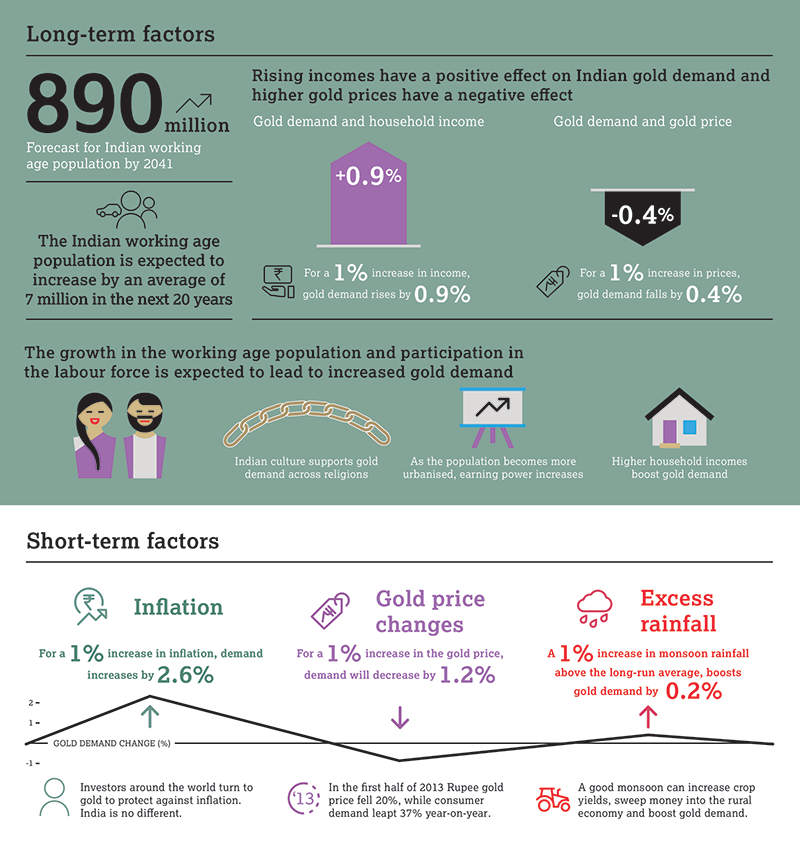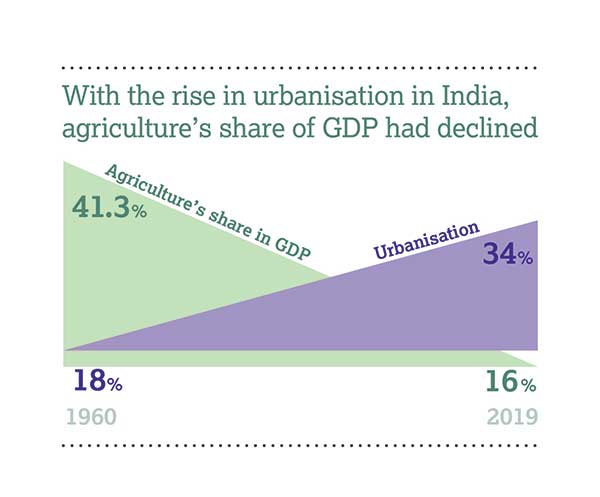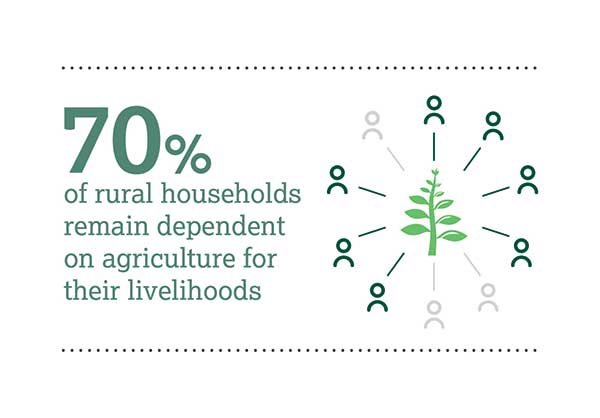Looking back over the past 40 years, for example, gold has delivered an average annual return of 10% in rupees, clearly outperforming CPI inflation, which expanded by an average of 7.3% over the same period.44
Gold’s performance has also been particularly strong when inflation was high, increasing by 11% on average, when inflation rose above 7%.45 As inflationary pressures tick up therefore, historical precedent would suggest that demand for gold will follow.
Government policies and the impact on gold
India is unusual. Even though the country is one of the leading sources of gold demand worldwide, there is almost no domestic production. As such, when demand rises, imports tend to rise in sync. This can, at times, have a significant effect on India’s trade balance and current account.
This was particularly in evidence after the Global Financial Crisis, when gold imports rose sharply, reaching a high of Rs2,922bn by FY 2012/13, almost 20% of total imports to India.46 A combination of rising demand for gold, reduced demand for Indian exports and soaring oil prices had severe implications for India’s current account deficit (CAD). From less than Rs116bn in 2001, the deficit surged to Rs4,796bn in FY2012/13, equivalent to 4.8% of GDP.47
Faced with this fiscal imbalance, the government-imposed restrictions on a raft of imported goods, including gold. Duties on gold imports increased fivefold in less than two years, from 2% in January 2012 to 10% in August 2013. The government also implemented the 80:20 rule, under which gold importers were required to export 20% of their gold as jewellery.48 Recognised as unwieldy and market-distorting, the rule was scrapped in November 2014 but import duties remained at elevated levels. And in July 2019, they were raised still further to 12.5%, as part of a series of tax-raising initiatives designed to improve the government’s fiscal position.49
The basic custom duty (BCD) on gold was reduced to 7.5% at the Union Budget of 2021-22 but, in combination with other levies, total import duties on gold still stand at 10.75%, (compared to 12.875% before the budget).50
The unofficial market
Over the years, government policies on gold have had widespread consequences. Back in 2013 and 2014 for example, import duties and the 80:20 rule pushed up the gold price premium in the local market, created uncertainty and deterred some potential gold buyers.
But there is a far more pernicious consequence of high import duties and other such restrictions: they tend to drive parts of the gold supply chain underground. Between Q3 2013 and Q4 2014, some 335t of gold was smuggled into the country, around a quarter of total demand. And, in the second half of 2019, while official imports fell and the CAD narrowed, unofficial imports surged by 42%.
In the face of huge, smuggled inflows of gold, the efficacy of successive import restrictions has been called into question. There is a further consequence too – the more pervasive India’s unofficial gold market becomes, the more difficult it is for the mainstream market to advance and develop. A reduction in tax rates could therefore confer benefits on two fronts. Lower duties would almost certainly boost overall demand for gold. And lower tax rates could create more opportunities for the compliant and organised sections of the gold market by squeezing out the unofficial or ‘grey’ market.
This could have a meaningful impact on India’s role on the global gold stage. A direct consequence of high rates of duty, grey trading severely reduces gold’s role in mainstream financial services, it limits the appeal of India’s handcrafted jewellery overseas and it curtails India’s influence in the gold trading market.
It should also be noted that gold imports have accounted for just 7% of total imports (Chart 10) over the past eight years. Over the same period, electronics imports accounted for 11% of total imports, while crude oil made up 24% of the total. The CAD has also fallen, averaging Rs2,112bn over the last seven years (Chart 11).



